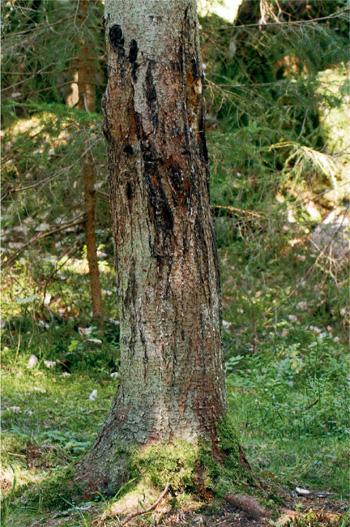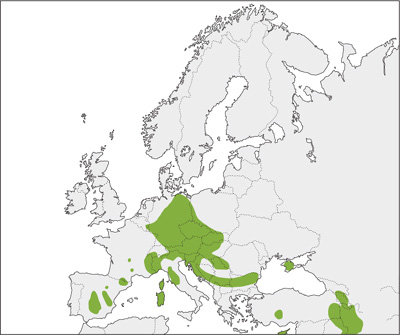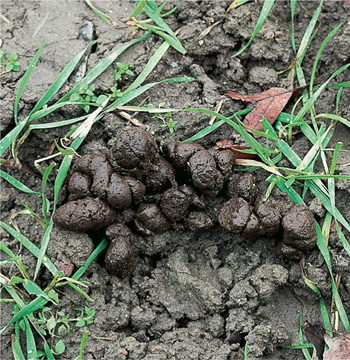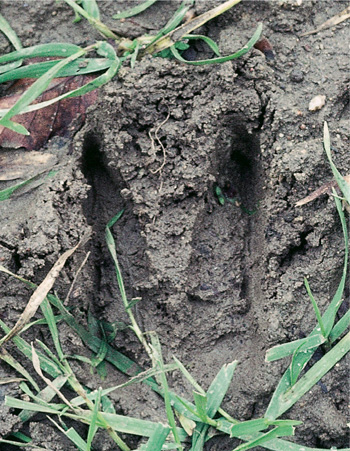
Ovis orientalis
The Mouflon comes from Corsica and Sardinia. It has been introduced into nature parks and other captive environments in many places in Europe and has spread in the wild as individuals have escaped. The male, the ram, is larger than the female and has large spiral-shaped horns with deep diagonal grooves.
It is difficult to separate the tracks of deer and Mouflon. Mouflon have long, slender hooves; the front pair is markedly splayed even when moving normally. The hoof is pointed at the front. The hooves are kept close together on the hind legs, and the hind prints are more angular. The ram’s tracks are 5.5–6 cm long and 4.5–5 cm wide, the female’s somewhat smaller. You can find dew claw prints, but they are very small and very close together, and you can see them only if the animal has moved very fast, has jumped from a significant height, or has moved around in deep snow. The hind foot is placed in the front footprint, the splaying is pronounced, and the stride is very small: for the female 35–40 cm, for the male 40–60 cm.
Mouflon, domestic sheep, and goats will eat bark and branches like deer, and especially in winter, they can remove all the bark. The teeth marks normally appear at somewhat of an oblique angle on the trunk, whereas deer teeth marks often follow the vertical direction of the trunk.
Mouflon gnaw marks on a spruce. AK.



Mouflon tracks. EHA.

The scat of Mouflon and domestic sheep is 1–2 cm in diameter, compact and angular. The balls of scat often stick together in sausages or clumps 10–15 cm long; the Mouflon scat-balls are somewhat smaller than a sheep’s and do not stick together as tightly.
A Mouflon ram. KF.
